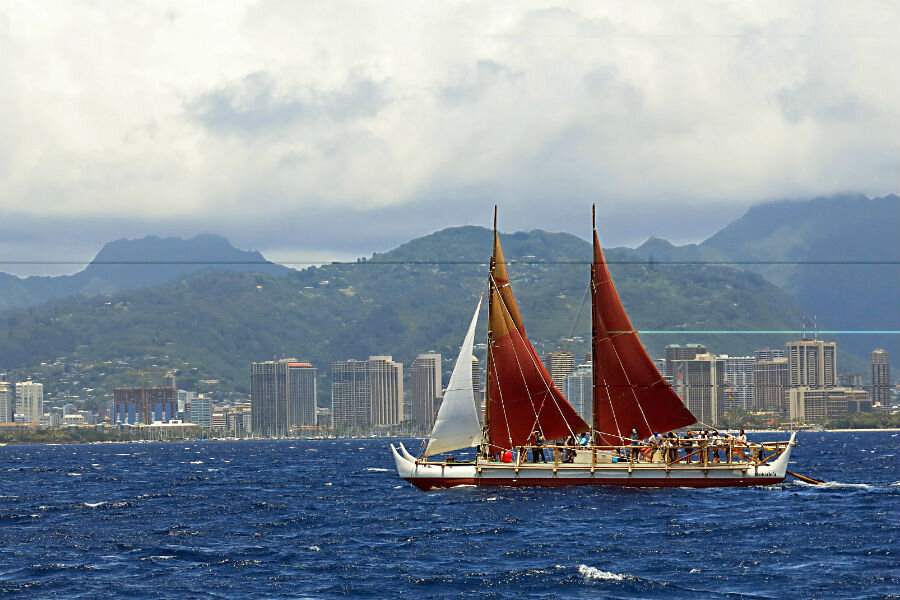Epic journey: Around the world in a Hawaiian canoe
Loading...
The crew of a traditional double-hulled Hawaiian canoe celebrated the half-way mark of an epic journey around the world with a stop in South Africa, where they rested from the toughest part of the journey.
The canoe expedition – part of a project that has celebrated and shared Hawaiian traditions since the 1970s – has just finished the first half of the journey, and its most difficult passage around Africa's southernmost tip. The crew said they experienced gale-force winds, lightning storms, horizontal rain, and freezing weather on their passage around the African coast, Marcel Honoré reported for the Star Advertiser.
"To do a trip like this, it must have been a strain on the boat itself,” Cape Town native Donovan Koesyn told the Star Advertiser. “I’m quite familiar with the coast and the type of weather we have around here. I’m actually impressed that it withstood the trip."
The crew members use traditional navigation relying on the stars at night, sail and row to some 100 ports in 27 nations around the world. Along the way, they share their Polynesian culture's tradition of preserving the environment with those they meet.
Mālama honua, the guiding value of the voyage, in Hawaiian means “caring for island earth.” It is a message similar to South African ubuntu philosophy of community and caring." In Cape Town, the crew "will be searching for local examples of mālama honua."
"I need to know that my job is over, and all this crew can be proud of what they’ve done,” the canoe's Captain Nainoa Thompson said Saturday, according to the Star Advertiser. “I’m exhausted."
The crew said they were struck by the sound of Hawaiian and African drums together as they entered the safe marina in Cape Town after the latest leg of their journey. The welcome ceremony featured Hawaiian and Zulu dancers, who took turns sharing their native dances, the Associated Press reported.
"We're finding the definitions of caring, compassion and aloha from many of the places that we go," Thompson told the Associated Press, reflecting on the recent news of terrorist attacks in Paris. "We're just very blessed and very fortunate to be witness to it among all the stories of rage and anger."
The captain said in the canoe voyage, the hard parts can be the best.
"I’ll never be able to say enough to the men and women on this crew that I’ve been so privileged to sail with, that that moment in Maputo, even though we describe it as the most difficult, is the place that made us the most strong,” said Hokulea captain Nainoa Thompson, according to KHON 2.
Nobel Laureate Archbishop Desmond Tutu welcomed the canoe mission to South Africa. He travelled on the canoe during its journey in 2012, and his reception was partly why the group made their stop there.
The canoe's next official port stop is Brazil, according to their voyage plans.








